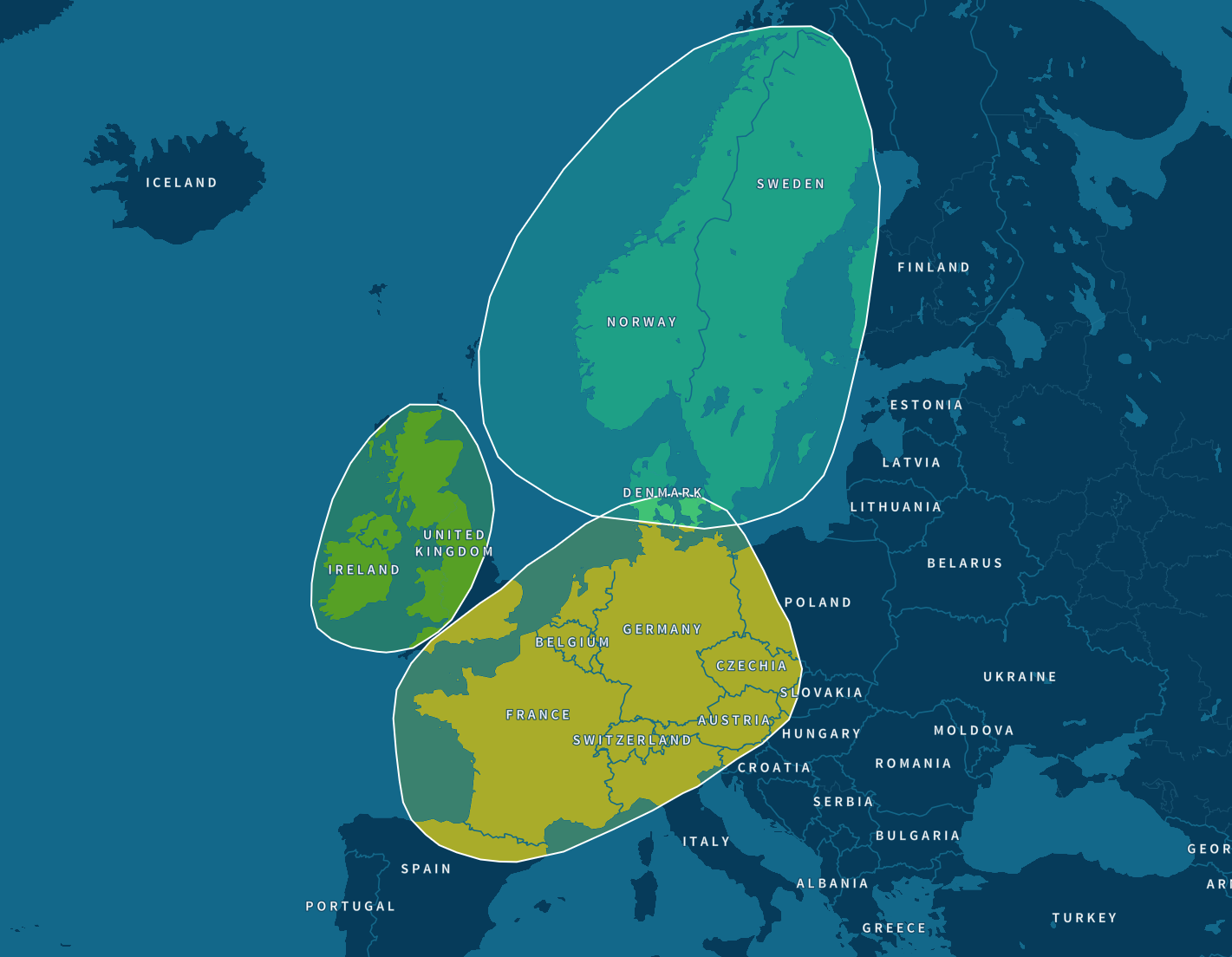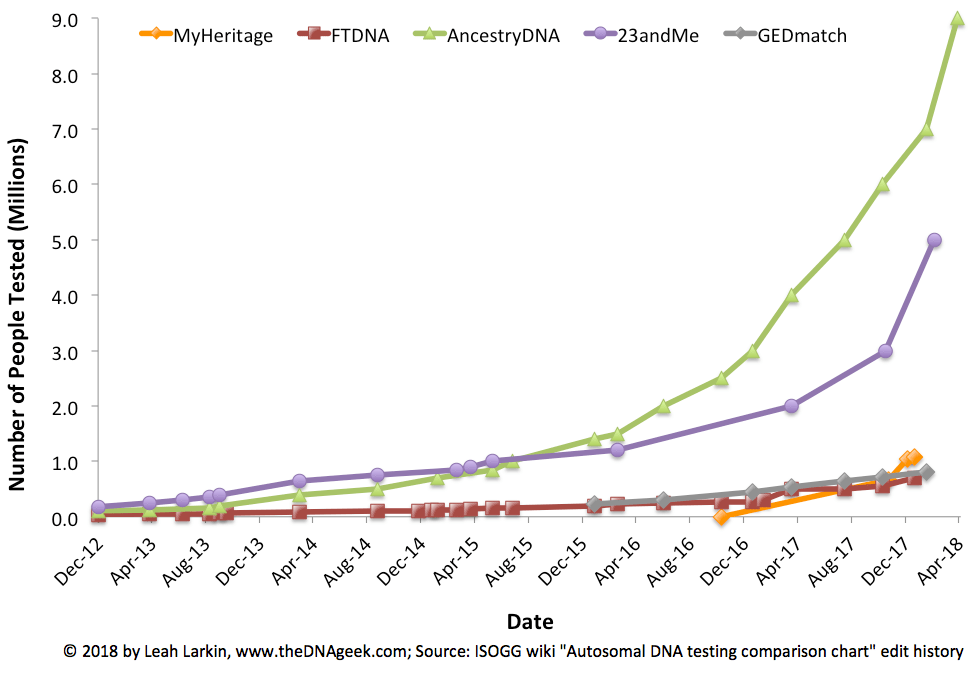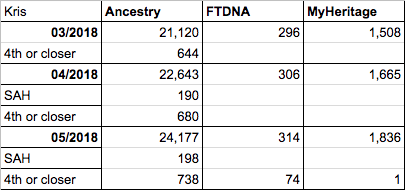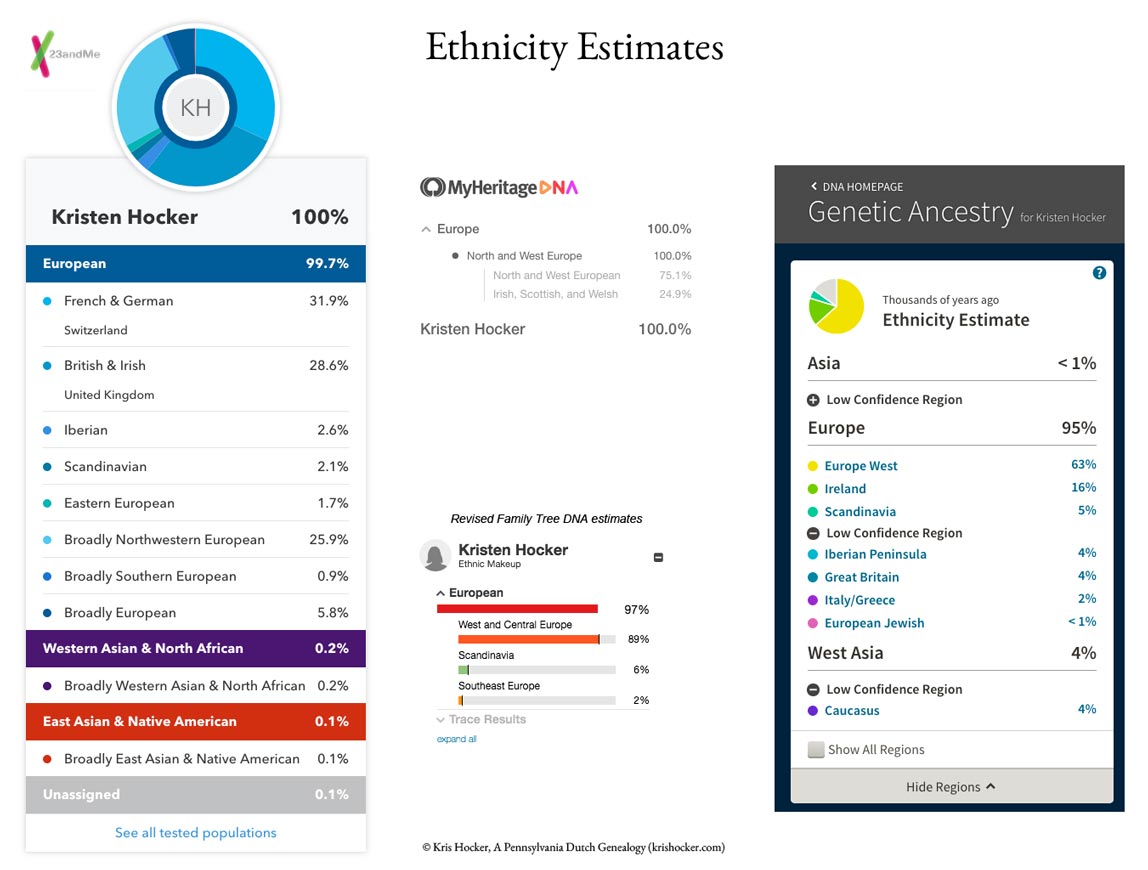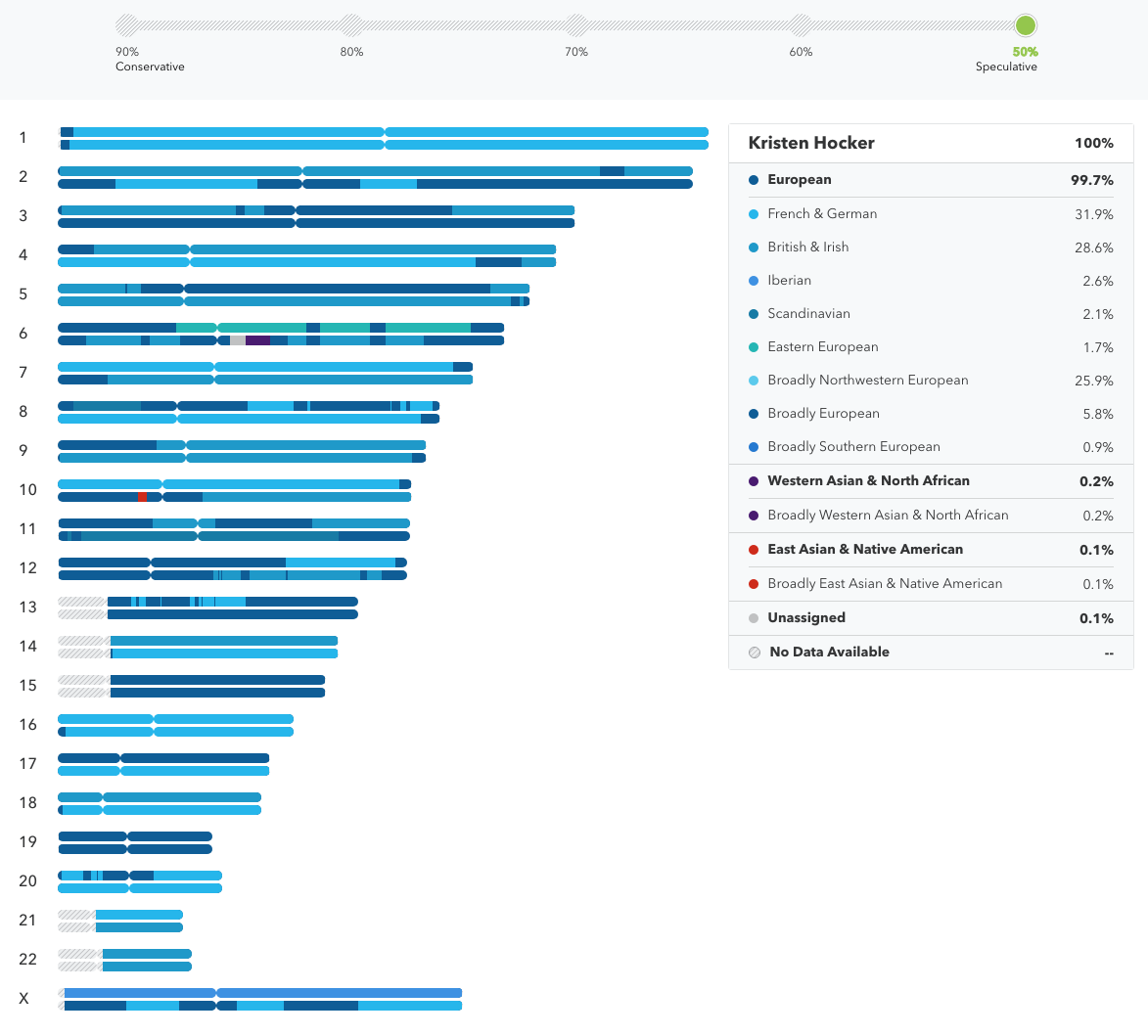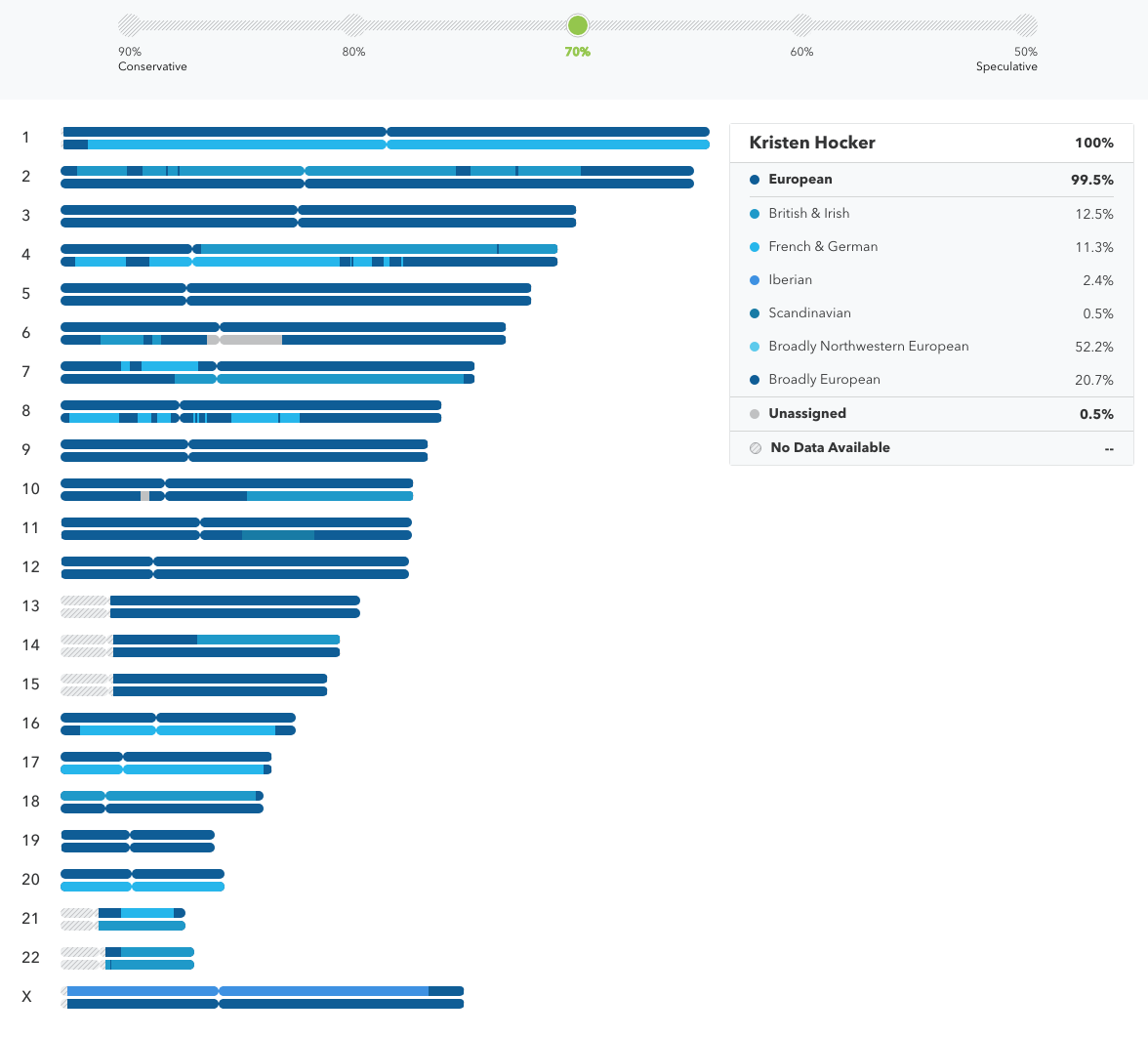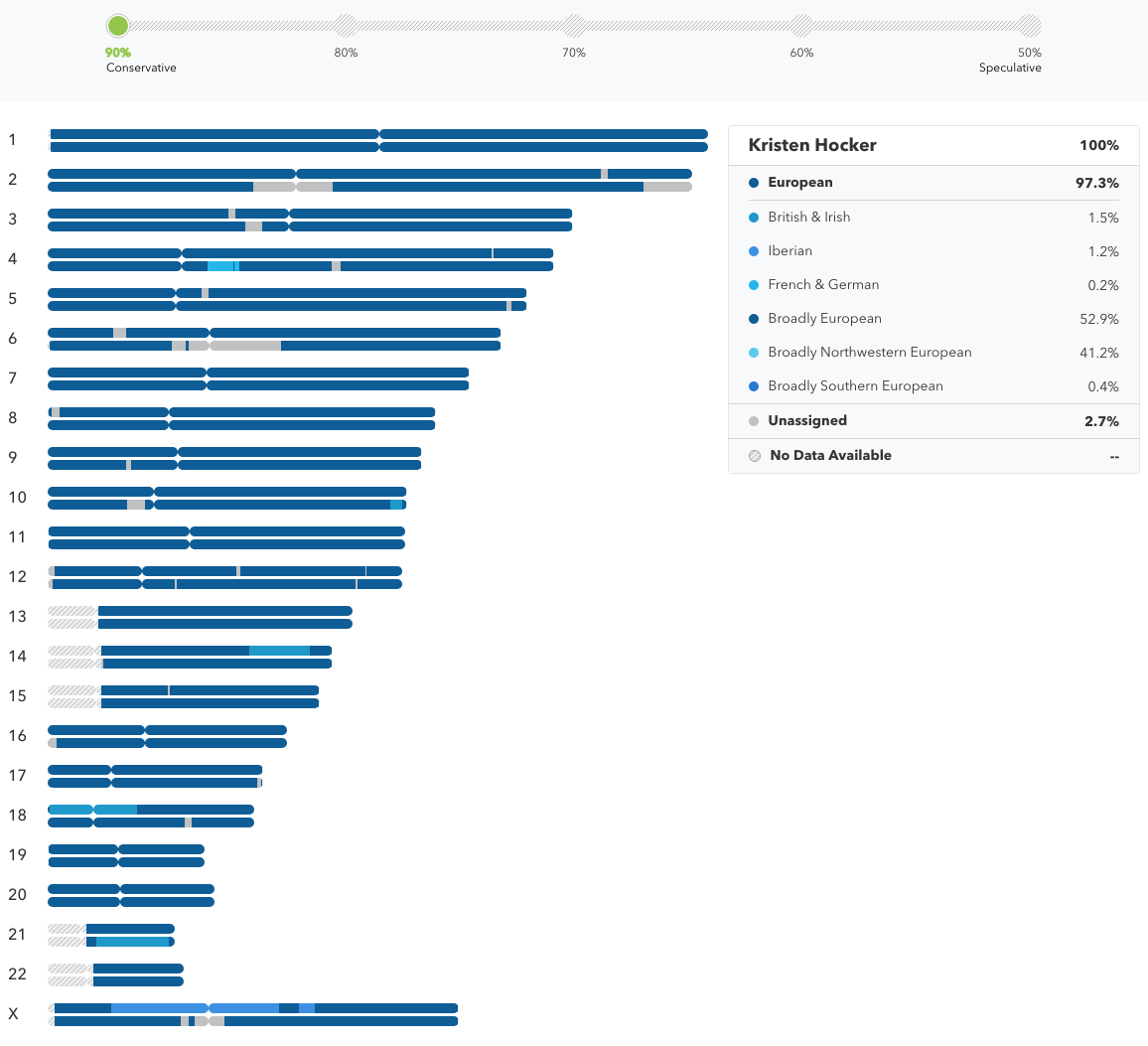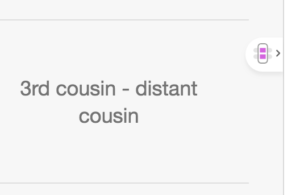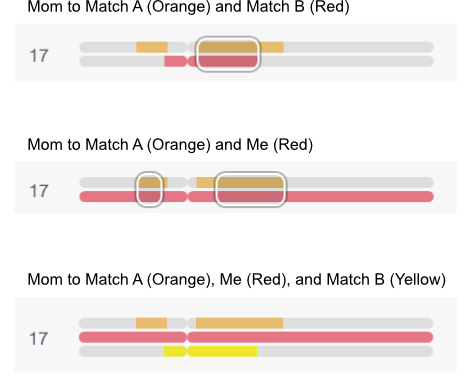DNA By the Numbers
We all saw the holiday sales on DNA tests from the major testing companies. Ancestry especially seemed to be advertising everywhere. So, before all the newly taken tests start delivering results, I thought I’d take a snapshot of where I stand results-wise.
I started tracking results last March. It’s a bit difficult to compare the companies to each other, except by total number of matches. And even then it’s not exactly a fair comparison. So, let’s look at each company across the tracking period.
Ancestry
At the beginning of March 2018, I had a total of 21,120 matches at Ancestry. 644 of those were 4th cousin or closer. By the end of the year, those numbers had grown to 30,037 and 921.
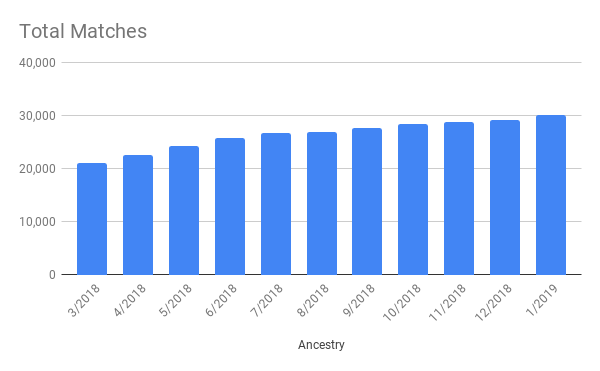
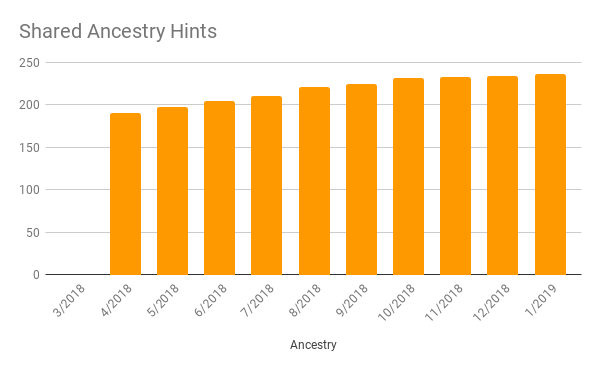
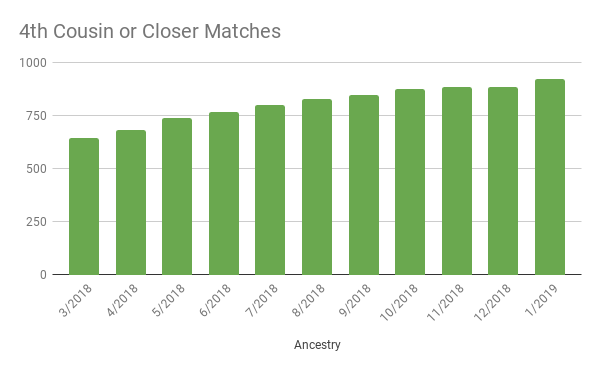
As you can see, there was fairly steady growth after an initial quick uptick.
MyHeritage
I uploaded my AncestryDNA results to MyHeritage early last year. While the numbers are not as great as at Ancestry, the growth has been steady all year and I have a number of relative matches at the company that I don’t have at Ancestry. I started out in March with 1,508 matches and had 2,608 at the end of December. The number of close relatives (close & extended family) grew from one (only my Mom) to three (Mom, a 1st cousin, and a 3rd cousin).
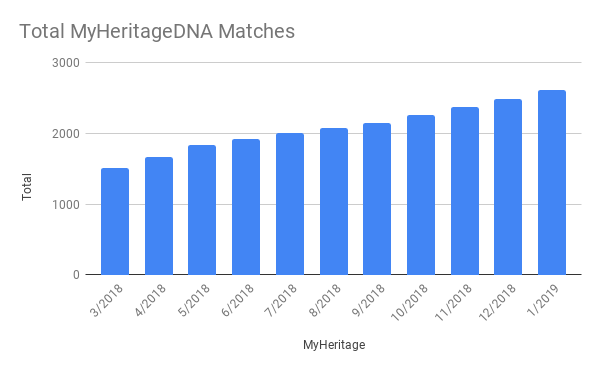
MyHeritage also has their equivalent of Shared Ancestry Hints—Smart Matches. I only have three of those as well.
Family Tree DNA
I also uploaded my results to Family Tree DNA. At the beginning of the year, they were the 2nd most well-known company. But I have to say the growth in the number of matches has not been impressive. Take a look.
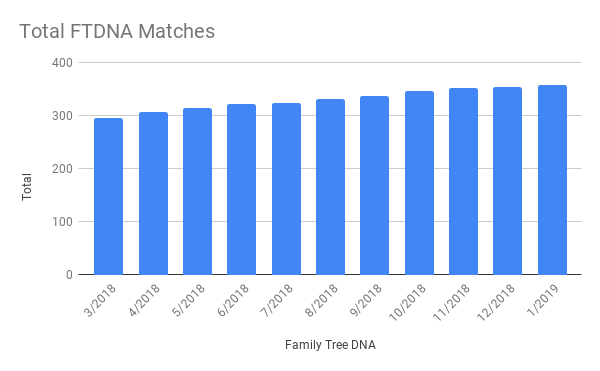
Over the course of nine months the number of matches grew from 296 to 358. Granted I would have more matches at FTDNA if I’d tested through the company, but I don’t know if the growth would have been any greater.
The Others
I’ve also uploaded to GEDmatch, 23 and Me, and LivingDNA. GEDmatch only lists your closest 2,000 matches. 23 and Me doesn’t provide your matches unless you buy a kit, but I apparently have a respectable 1,010 matches at the company. Based on the information provided I’m not sure if that’s the total total or the total of 4th cousins or closer.
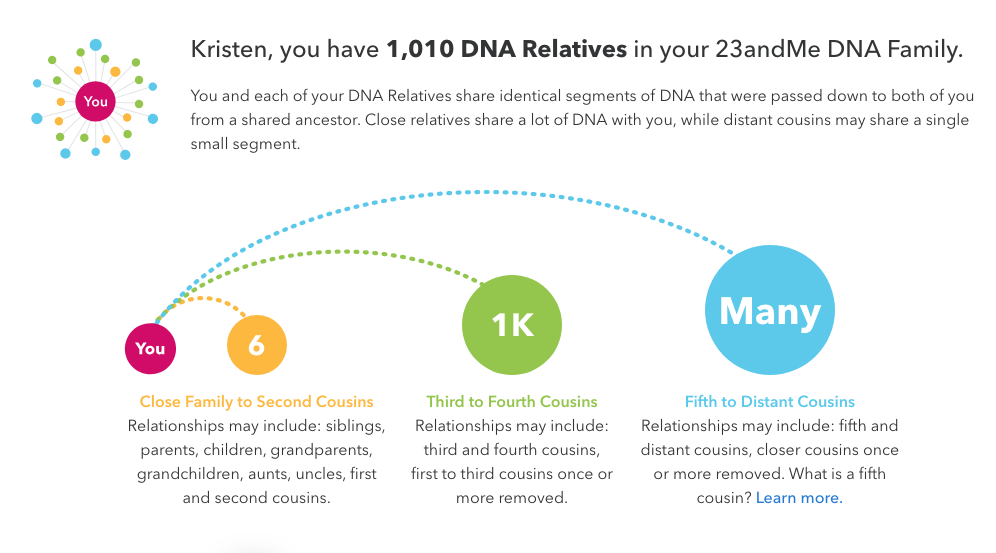
LivingDNA hasn’t apparently found any relatives for me, but I only got access to the Family Networks in November, so that’s not a great surprise. With any luck that will change in the coming months.
Conclusions
Based solely on the total number of matches, if you’re looking to identify relatives or to build your family tree, Ancestry is the place to test. If you’re looking for international matches, I’ve found more of them on MyHeritage—though if I spent the money to test at 23 and Me or LivingDNA, I think I might find them there, too.
It will be interesting to see how the numbers change once all the holiday purchase results are added online. If I recall correctly, I had a lot of new matches to work with in early 2018. With the significant drop in DNA kit pricing during the holiday sales, I wonder if there are going to be even more to work with in the next few weeks or months.

